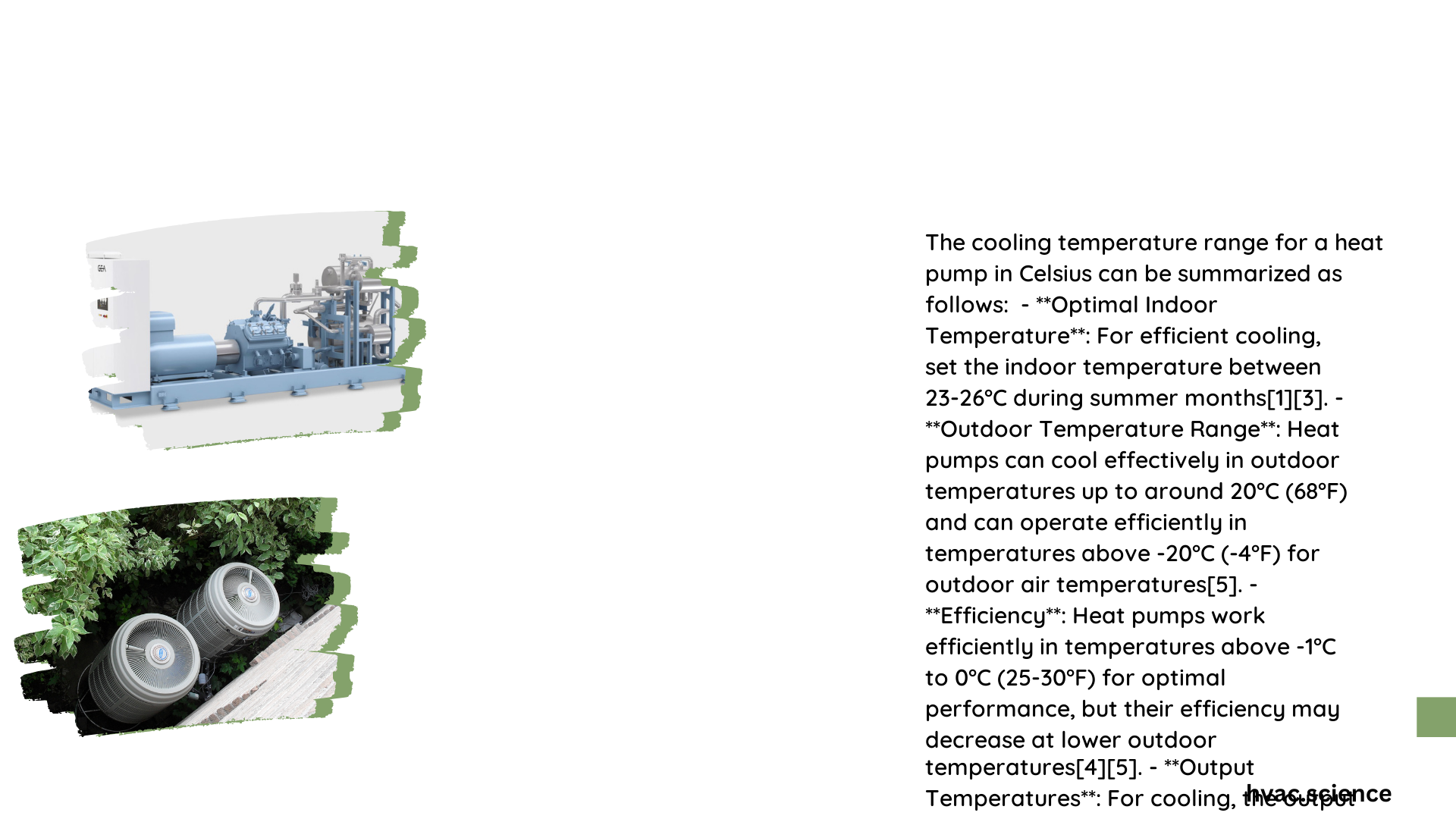Heat pumps offer remarkable cooling performance within a specific temperature range in Celsius. Understanding the optimal cooling temperature between 23°C and 26°C can significantly impact energy efficiency, comfort levels, and system performance. This comprehensive guide explores the nuanced aspects of heat pump cooling temperature range, providing homeowners and professionals with critical insights into maximizing their cooling systems’ potential.
What Is the Optimal Heat Pump Cooling Temperature Range?
Heat pumps operate most efficiently within a carefully defined temperature spectrum. The ideal cooling temperature range spans from 23°C to 26°C, which balances comfort and energy consumption.
Key Performance Characteristics
| Temperature Range | Efficiency Level | Energy Consumption | Comfort Rating |
|---|---|---|---|
| 23°C – 26°C | High | Moderate | Excellent |
| Below 23°C | Low | High | Poor |
| Above 26°C | Decreasing | Increasing | Marginal |
How Do Temperature Variations Impact Heat Pump Performance?

Factors Affecting Cooling Efficiency
- Outdoor Temperature Influence
- Heat pumps maintain optimal performance up to 40°C
- Efficiency begins to decline beyond this temperature threshold
-
Humidity levels significantly impact cooling capacity
-
Indoor Temperature Considerations
- Consistent temperature settings reduce energy consumption
- Rapid temperature fluctuations increase system strain
- Gradual adjustments preserve system longevity
What Determines Heat Pump Cooling Capacity?
Several critical factors contribute to a heat pump’s cooling effectiveness:
- Compressor technology
- Refrigerant type
- System design
- Insulation quality
- External environmental conditions
Efficiency Metrics
- Coefficient of Performance (COP): Measures energy conversion efficiency
- Seasonal Energy Efficiency Ratio (SEER): Indicates annual performance
- Temperature differential capabilities
Can Heat Pumps Operate Beyond Standard Temperature Ranges?
While heat pumps can technically function outside recommended ranges, performance degrades:
- Low-Temperature Scenarios
- Minimal impact on cooling performance
-
Potential efficiency reduction
-
High-Temperature Scenarios
- Significant efficiency decline
- Increased energy consumption
- Potential system stress
Practical Recommendations for Optimal Cooling
Temperature Management Strategies
- Maintain consistent 23°C to 26°C settings
- Use programmable thermostats
- Implement zonal cooling techniques
- Regular maintenance ensures peak performance
Advanced Cooling Techniques
- Variable-speed compressors
- Smart temperature monitoring
- Humidity control mechanisms
- Adaptive cooling algorithms
Technical Considerations for Maximum Efficiency
- Proper system sizing
- Regular filter maintenance
- Professional annual inspections
- Advanced refrigerant management
Energy Consumption Comparison
| Cooling Method | Energy Efficiency | Temperature Stability |
|---|---|---|
| Traditional AC | Moderate | Low |
| Modern Heat Pump | High | Excellent |
Conclusion
Understanding the heat pump cooling temperature range in Celsius empowers users to optimize their cooling systems. By maintaining temperatures between 23°C and 26°C, homeowners can achieve superior comfort, energy efficiency, and system longevity.
Pro Tips
- Monitor outdoor temperature variations
- Invest in high-quality heat pump systems
- Implement smart temperature management strategies
Reference:
– Fujitsu General Heat Pump Guidelines
– HVAC Efficiency Research
– Heat Pump Performance Studies
